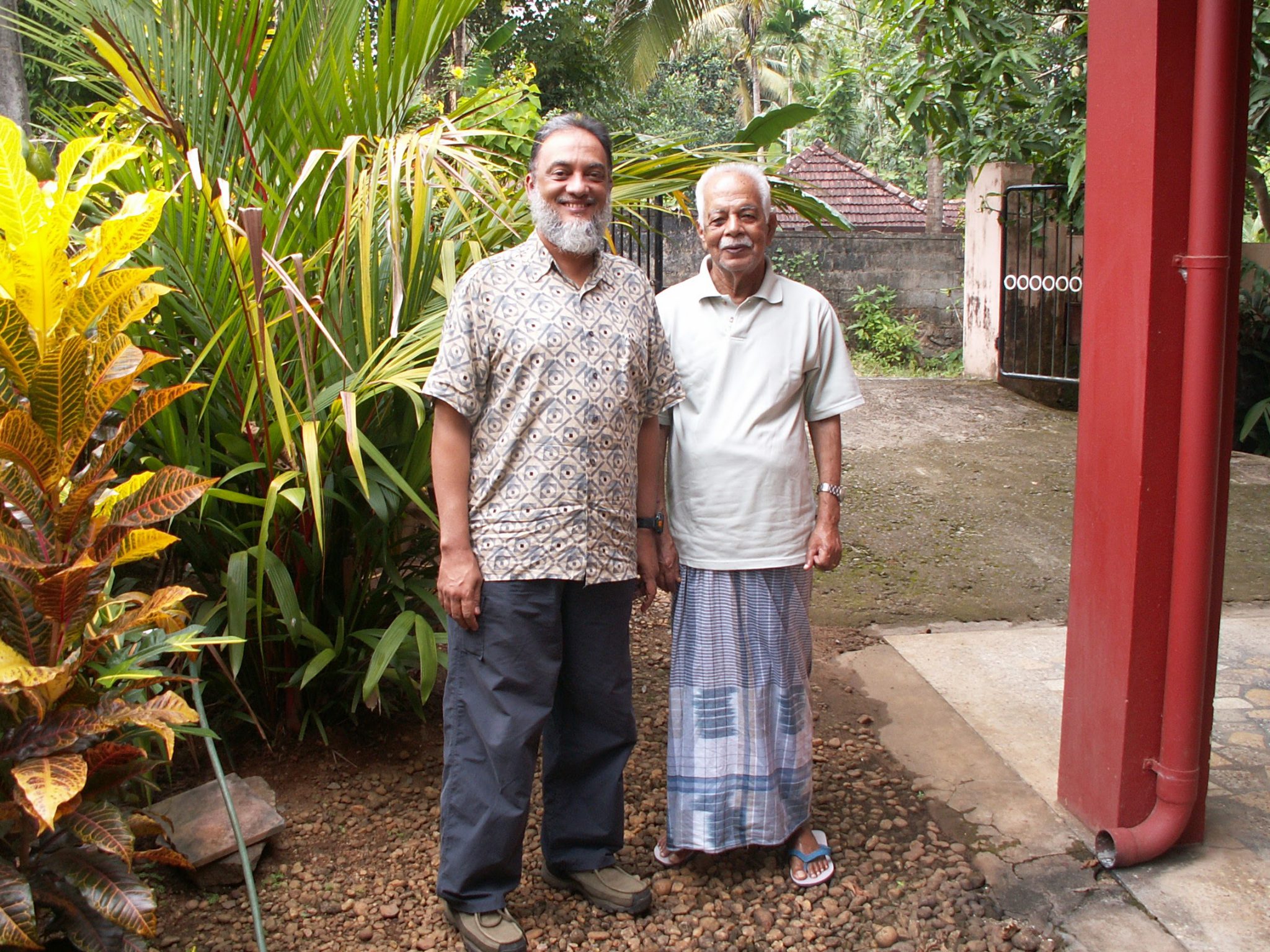I had been a member of the team that built the Mayura Factory in the Anamallais where I was the Assistant Manager in charge of the building project. So, I was closely associated with the project from the word ‘Go.’ The factory was built on Lower Sheikalmudi Estate and AVG Menon, Group Manager, Sheikalmudi Group and my first manager, was made responsible for the project. He appointed me as his assistant for the day-to-day supervision of the construction and so I became the defacto Site Manager of the project. However, at the time, I was also Assistant Manager, Murugalli Factory, which as the crow flies is across the valley between Murugalli Estate and Lower Sheikalmudi Estate Lower Division, but since the crow in question couldn’t fly but walked, it was (and is) just under 5 kilometers (3 miles). I say ‘walked’ because my company transport, a Jawa motorcycle, was inordinately fond of the workshop and its body was kept connected with its soul by the Blacksmith (a term used to describe the one who did every kind of mechanical thing to keep factory machinery and vehicles running) Thangavelu. Consequently, I walked most of the time. What saved me from this fate was that one day, Mr. N. K. Rawlley (Nikoo) who was the VA, came to visit the Sheikalmudi Group and found me marching along the road. He stopped his Jeep and asked me what happened. I told him. He asked me to get in with him and took me to Mayura and soon after he returned to the Plantations Office in Iyerpadi Estate, I got a Royal Enfield 350, which was the love of my life.
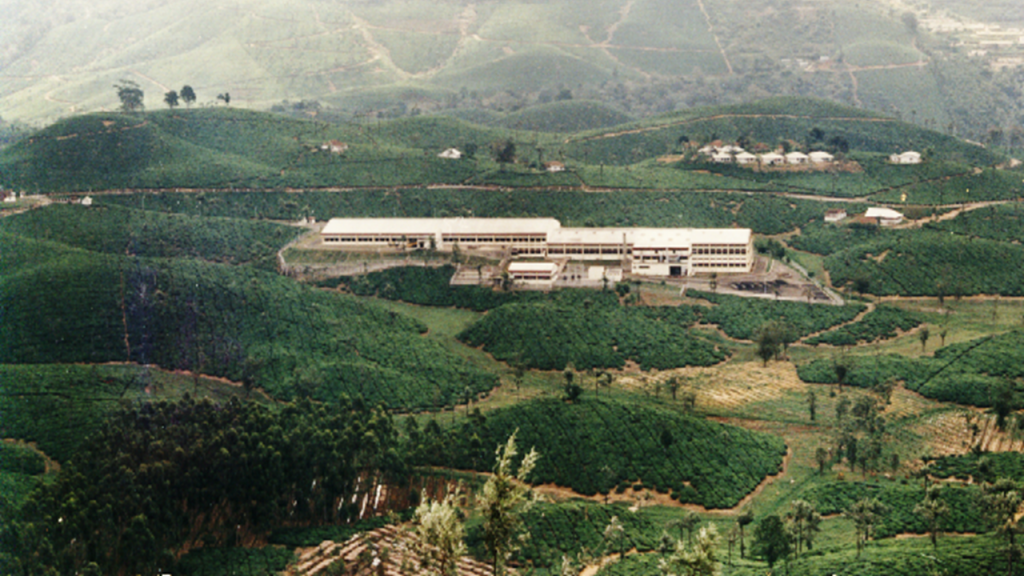
Mayura was unique for many reasons. For one thing, it would have the capacity to process one-hundred-thousand kilograms of green leaf per day. At a time when the average production was two-thousand-five-hundred kilograms made-tea per hectare, this was a huge figure, one that nobody thought could ever be reached. It was the vision of Mr. K. Ahmedullah who was the General Manager, Plantations. He proposed that creating capacity would stimulate production as it would put pressure on the estates to supply the factory. Initially, nobody believed him except the Murugappa family; Mr. M. A. Alagappan and Mr. AMM Arunachalam in particular. But that was enough as they were the ones who would fund the project. Once the factory was completed, Ahmed’s vision was proved right. The production of the estates went up from two-thousand-five-hundred to four-thousand kilograms made-tea per hectare. This did not happen by magic. A lot of people put in a lot of effort, but there is no doubt that it was the audacity of the vision that pushed us to excel.
Since the Anamallais is hilly, building a huge factory was no easy task. It involved leveling the land to create the construction site. Part of the building would be on columns, but we still needed a level site to locate other buildings and bays. The distinctive feature of Mayura’s architecture was that it was an Assam factory in South India. Mayura was made fireproof in two ways. It was a concrete structure and not made of wood. And it had a linear floorplan on three giant steps cut into the mountainside, instead of being multistorey as are all older South Indian factories. In Mayura, the withering lofts are nearest the gate so that unloading of green leaf is most efficient. Then one step down are the CTC rollers and driers followed by graders and yet one more step down, the storage silos and packing and loading area and bays. That enables smooth workflow from one end to the other and so makes it possible to have a high degree of automation and computerized process controls. A far cry from standard South Indian factories which are designed with the driers, sifting, and packing on the ground floor and withering lofts directly above them. This was done due to a shortage of level land and the difficulty of creating it manually, but it made the factory like a giant chimney. If it caught fire, as we saw very graphically in Sheikalmudi, the whole structure burnt down in the shortest possible time. The superstructure was entirely of wood and one spark could send it all up in flames. When a factory is destroyed, it is not only a loss of material and capital, but it disrupts the production of the estate for months and causes a loss that is difficult to measure. Mr. Ahmedullah was determined that Mayura would not be built like the fire prone factories of the south.
The biggest challenge for an ‘Assam’ design in South India was to find a flat piece of land, which in the Anamallais with its hills and valleys, is simply not there. That is the reason why South Indian factories are built the way they are because there is a shortage of flat land. Almost a century ago, when most of the factories were built, to manually clear and level land in a place where it rained for six months in the year was expensive, slow, and backbreaking. Mayura came a hundred years later when we had the benefit of earth moving machinery. We had two bulldozers (CAT D-4) come up from Coimbatore to do the cutting and moving of soil on the hillside to get enough level land to start building. We needed the land to be cut to make three huge steps on which the factory building’s different functional areas would be located.
I went down to the site on the first day that the work was going to start. The bulldozer operators were already on their machines with the engines running. I called the leader of the team to give him instructions. He switched off the engine and came to me. I showed him from which part of the hillside I wanted the soil to be cut and where I wanted it to be moved and dumped so that eventually we would get the three steps. He listened in silence, then handed me the key and said, “Why don’t you show me how to do it?”
I was taken aback by this obvious insubordination so early in the morning. But I took the key from him, climbed up on the track of the dozer and into the seat. I started the engine, engaged the gear, and started cutting the soil. I worked for about half an hour. Then I parked the machine, switched off the engine, got off the machine, and handed the key back to the driver and walked away, all in silence. I had a hard time keeping a straight face at the look of shock on the driver’s face for having called his bluff. The long and short of this was that I never had a problem with that driver again for the duration of the land clearing stage. When the work was done and the drivers were going back, he came to me and said, “I apologize for challenging you on the first day, but tell me where did you learn to drive a bulldozer?” I told him, “In future, before you challenge anyone, find out what they know.”
My knowledge of bulldozers and machinery was acquired in Guyana in the open cast bauxite mines and came in very handy on that day. Knowing how to do the job myself and that too one that most people do not know, caused an impression not only on the bulldozer drivers but on everyone else. My workers were delighted that ‘their Dorai’ gave the man his comeuppance. And that added enormously to my credibility and earned me huge respect. In the plantations all this made a huge difference. Given the speed and efficiency of the plantation grapevine, this news of the incident was all over the Anamallais with proper embellishment as it traveled through the land. All to my advantage. My learning in this incident of the bulldozer was the fact that to build credibility it is important to be able to lead from the front. You do not have to do people’s jobs for them. It is not even desirable to do that. But you do need to demonstrate that you know what they do and can do it if necessary. It is when subordinates get the impression that you know nothing about what they do, that it makes them nervous, and they lose motivation. The good ones feel a little lost. The crooks take you for a ride.
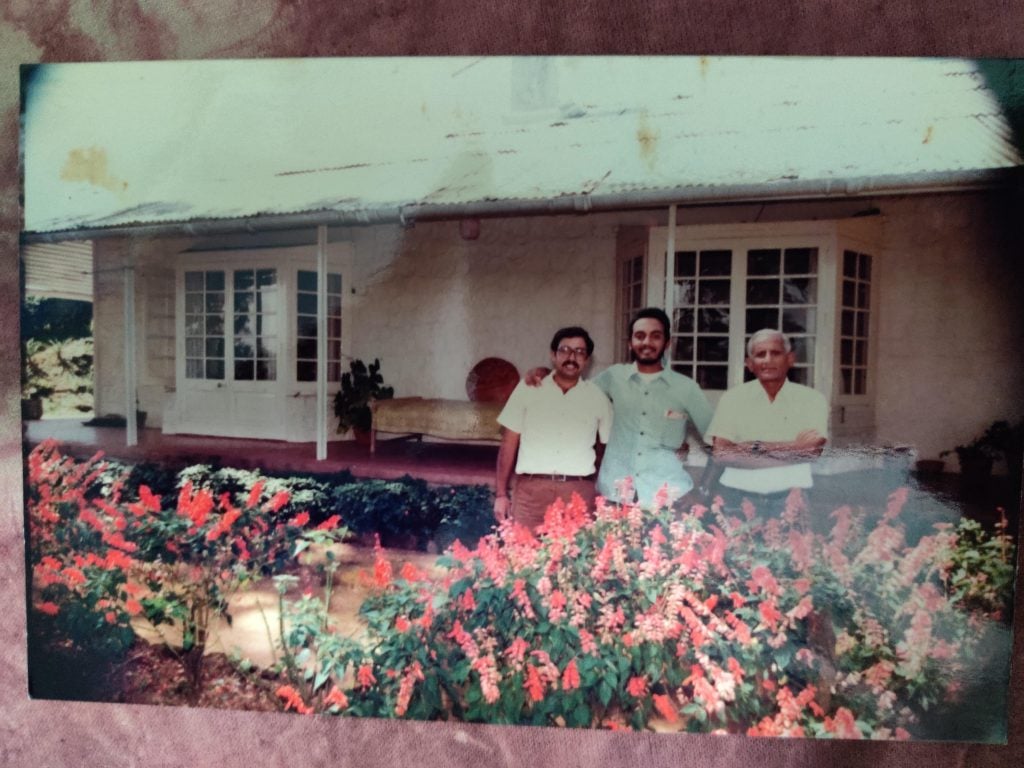
Mayura Factory’s construction was a time of learning for me. The site engineer was a wonderful elderly gentleman called Mr. D.R.S. Chary, who stayed with me in my bungalow throughout the project. He was a very well read and learned man, many years my senior but with a great sense of humor. We hit it off from the first day and became great friends. Mr. Chary taught me a great deal about constructing large buildings. I found this a fascinating time and used every opportunity I could to add to my knowledge. On the factory site, the contractor’s site engineer was another wonderful man called Mr. Dakshinamurthy. He also became a good friend.
Mr. Chary and I lived in the bungalow behind the tennis court on Murugalli Estate. We could see the construction site from our veranda. Since Mr. Chary was a Brahmin, out of consideration for him, I had instructed Bastian not to cook any meat while he was staying with us. No meat was cooked in our kitchen for close to an year, until after the inauguration of Mayura factory and Mr. Chary’s departure.
The Tennis Court Bungalow, as it was called, had a somewhat shady history in that it was supposed to have been the estate hospital in the remote past during an epidemic and many people had died in it. All this and more news was given to me by my dear friend, Kullan. Kullan had retired and his son Raman was a worker in the Upper Division. Raman used to be my companion on my treks to Grass Hills and his father became my friend. Kullan would turn up in the evenings and he and I would sit out on the veranda, and he would tell me stories of these hills. The fact that I had learnt Tamil and spoke it fluently was the root cause for this and many more friendships and for my being able to have a vastly different relationship with my workers from most managers. What also helped was that I treated my workers like colleagues and not as servants. They appreciated it and returned my affection manifold. Having said all that, Kullan refused to enter my bungalow and sit in the drawing room. He looked horrified when I suggested it and insisted on sitting on the veranda. There too he refused to sit on a chair and so both of us would sit on the steps. That having been settled, both of us would drink tea and Kullan would talk.
It was Kullan who told me about the number of people who had died in my bungalow in its previous incarnation as a hospital. He told me that in his childhood there had been an epidemic (my guess is cholera) and many people were brought to the hospital but few survived. This happened in the rainy season, which meant torrential rain. I asked him what they did with the bodies because cremation would have been almost impossible. In any case most tea estate workers bury their dead instead of cremating them. But that also would have been difficult in the monsoon, especially if the numbers were catastrophic, as they would have been during an epidemic. “They threw them into the ravine,” he told me, in a very matter of fact manner. “Which ravine?” I asked him. “That one,” he gestured to the ravine behind my bungalow. That was, to say the least, not very comforting. However, I do not believe in ghosts and so was not too bothered. Mr. Chary would sometimes listen to these conversations and when he was leaving many months later, he told me that he never had a peaceful night’s sleep in the house. I do not know how much of that was simply psychological because I slept perfectly peacefully and later when I got married and my wife came to this bungalow, she also never complained about not being able to sleep.
My bungalow also had the dubious distinction of having a resident ‘demon’. There was a small shrine at one end of the garden, which I was told was a shrine to Karpusamy (literally means: Black God), who the people described as a very powerful and evil entity that needed to be placated with an annual animal sacrifice. The sacrifice itself was not done in the bungalow garden but at a larger temple on Murugalli. Every morning, however, one of the tea pluckers would put some flowers at the shrine in the garden.
Some weeks after I had moved into the bungalow, some rumors started to circulate in the estate to say that my bungalow was haunted, and that people had seen Karpusamy near the bungalow at night. I saw nothing and was not perturbed by the rumors. I do not believe in ghosts and don’t believe that anything can harm or benefit anyone except the Creator Himself. So, I slept well.
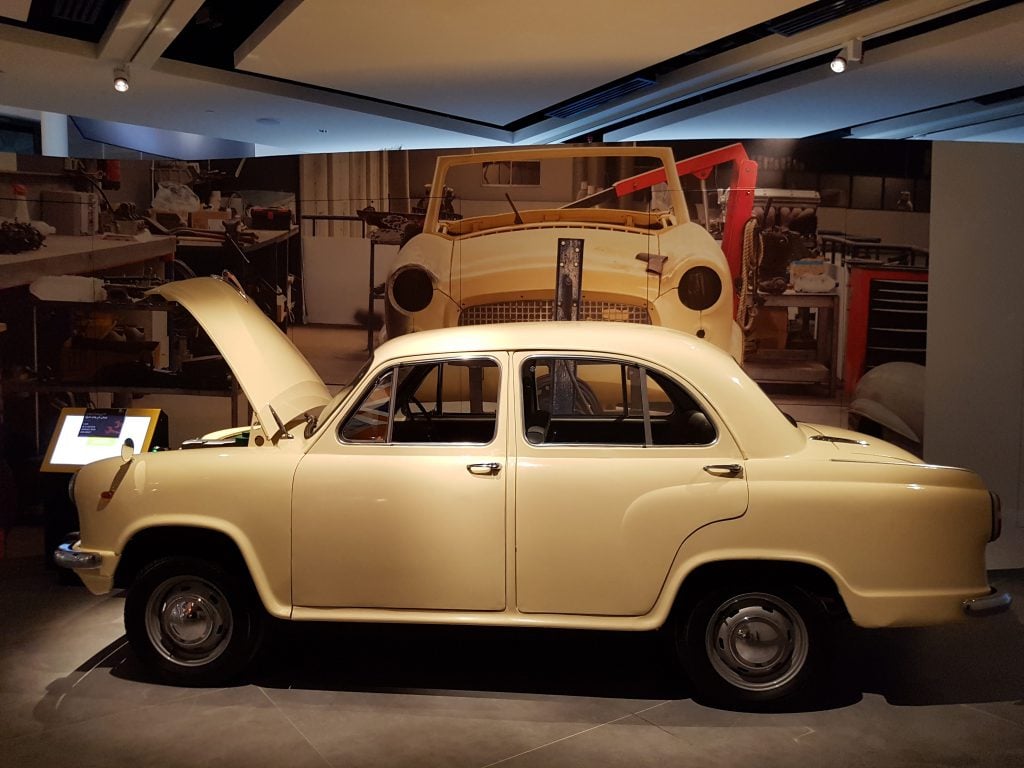
But things happened. I had recently bought a used Ambassador car. The Ambassador is made by Hindustan Motors. It was a replica of the 1952 Morris Oxford. In the case of my car, among its other attributes was the fact that it was graced with a carburetor that was cracked down the middle and was held together with binding wire wrapped securely around it. Now hold on – before you go making sly remarks about Ambassadors, ask yourself, ‘which other car would still run in this condition?’ And run it did. However, it did need long hours in the workshop from time to time. In the plantations the workshop came to you, as did most other things. One night, Velayudhan, the mechanic, was working on the car in my garage behind the house. He worked late into the night and promised to return the next day to complete the job. The next morning there was no sign of him and when I sent someone to look for him, the man returned and said that Velayudhan was in hospital.
I was very surprised and concerned as the man had been working in my house the previous evening and had been well and healthy. What could have happened to him for him to be hospitalized? He was a cheerful and willing worker, and I had a good relationship with him, so I was genuinely concerned for him. I went to the hospital and first asked the doctor, Dr. Cariappa , what the matter with Velayudhan was. Dr. Cariappa told me that he had been brought to the hospital late the previous night, hysterical, his heartbeat racing and appeared to be intoxicated. Dr. Caraippa first thought that he was drunk. But he realized that it was not alcohol but fear, which had him in this state. Velayudhan was literally frightened out of his wits. He had been so bad that Dr. Cariappa had been afraid the man would have a heart attack or a stroke. Dr. Cariappa gave him a heavy dose of sedative and he fell asleep. Someone or something had terrified Velayudhan. After listening to Dr. Cariappa , I went to see Velayudhan and he told me the story, which I present to you without comment.
He looked very sheepish because daylight tends to give you courage and makes you question the night’s reality. But when he saw that I was serious and concerned about him, he said to me, “Dorai, I had finished my work for the day on your car and decided to take the short cut through the tea field down the hillside, to go home, instead of walking the much longer way, on the main road. It was a full moon night, and the footpath was clearly visible in the moonlight. As I started down the path, I suddenly heard a heavy snort behind me, like a cow sometimes makes as it is grazing. I looked back over my shoulder and saw a huge man with flaming red eyes and huge teeth. That was Karpusamy. I turned and ran and then I fell down and fainted.” Some people who were going past on the main road below heard his running and then saw him fall. They picked him up and took him to the hospital. There was some suspicion that perhaps he had hit the bottle, but as I said earlier, the doctor denied that and said that he did not show any sign of having been inebriated. He was just very badly terrified and completely hysterical with fear. He recovered well from this experience but stopped using the shortcut through the tea, thereafter.
I lived in that bungalow for two years and went in and out at all hours, but never saw a thing. That is what led to the rumor that Karpusamy was the guard on the bungalow and guarded me. In the plantations such rumors add to your mystique and reputation. In any case, I could do nothing to refute it.
A year later, another incident added some more grist to the mill.
There was a supervisor who was very corrupt, so I dismissed him. He was naturally terribly upset and angry with me and threatened me with many things. He did not say any of this to me directly of course, but various rumors started floating that he would do black magic against me. Black magic is quite prevalent in the plantations and many people claimed either to do it or to having been its victims. When these stories got to me, I said, “If anyone does anything against me, it will turn against him. I worship AllahU and nothing can happen to me without His will. I ask Him to protect me.” That put a stop to all the talk that came to me.
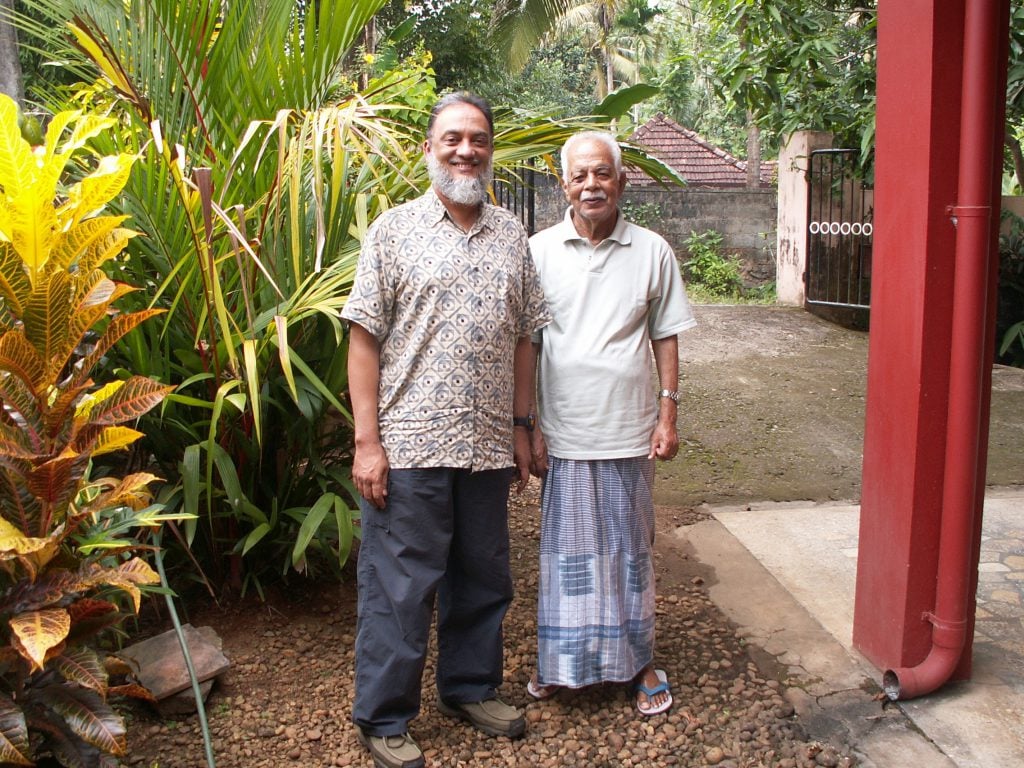
Then one day, I was with my Field Officer Mr. O. T. Varghese, a wonderful elderly man who taught me a lot about tea planting. We were on our daily inspection of fields in plucking. Suddenly, a plucker woman came running to us, wailing all the while and fell at my feet. She was wailing, “Only you can save him. Have mercy on my husband……” and so on. I was taken aback to say the least. After a while, Mr. Varghese and I managed to get some sense out of her. Mr. Varghese told me that she was the wife of the dismissed supervisor. She told us that her husband had gone to a black magic expert in their village and asked him to put a spell on me to kill me. However, the spell backfired on him and now he was dying and was in hospital, where they had brought him the previous evening. She begged me to go with her and see her husband.
I agreed, though I thought to myself that this was a jolly good thing and served him right for his efforts. After all, his wife had not tried to stop him from his nefarious activity and if he had succeeded, his wife would have been sitting pretty with him and not running to my aid. Mr. Varghese and I reached the hospital and I asked Dr. Cariappa about the patient. He said to me that there was nothing wrong with him except that he was in a highly agitated state of terror and had not slept for more than 72 hours. His heart was racing, and Dr. Cariappa was fearful that if he continued in this way for a few more hours, it was entirely likely that he would have a heart attack. As soon as I entered, the man literally fell off the bed and put his head on my feet. Weeping, he cried, “Dorai, please forgive me. I tried to do something bad to you, but it has come to me. I have children Dorai and they will become orphans if I die. Please forgive me Dorai and take this thing away from me.” It was the strangest experience that I have ever had in my life. I had no idea what he was talking about or how to ‘take away’ whatever it was that had him in its grip. But the first rule of leadership is never to display indecision or lack of confidence. No matter that you are not confident. Just don’t show it. I told him to get up and pulled him up by his arm and put him back on the bed. Then I asked for some water and recited Sura Al Fatiha (the first Sura in the Qur’an) and the Al Muwaddathian, the last two Suras and blew on the water and told him to drink it. I told his wife to give him what was left of the water later in the evening. Then I left. Dr. Cariappa told me later that shortly thereafter the man slept and the next morning he was discharged.
Never a dull moment in the estates.
I recall another fond memory. The Muslim workers in Murugalli Estate had decided to dismantle the temporary shed that they used as a masjid and build a small, permanent brick structure in its place. They had collected some money and I also managed to get them a small grant from the company. But when they did the math, they discovered that they had no money for the centering sheets to cast the concrete roof, nor did they have money for the labor to cast the slab. They came to me for advice to resolve this issue. I spoke to Mr. Dakshinamurthy, the Mayura Factory site Engineer, on their behalf, and he readily agreed to give them centering sheets free of cost. He also lent them the concrete mixer. All that remained was the labor. I said to them, “To build a masjid why do we need to hire others when we are here. Get your wives to make some food and we will all do it on Sunday.” They were delighted with the idea. The Muslim workers in Murugalli were all from Mallapuram district of Kerala. Their leaders were Soopi Maistry and Musa Maistry and they were very happy that I would also be there with them.
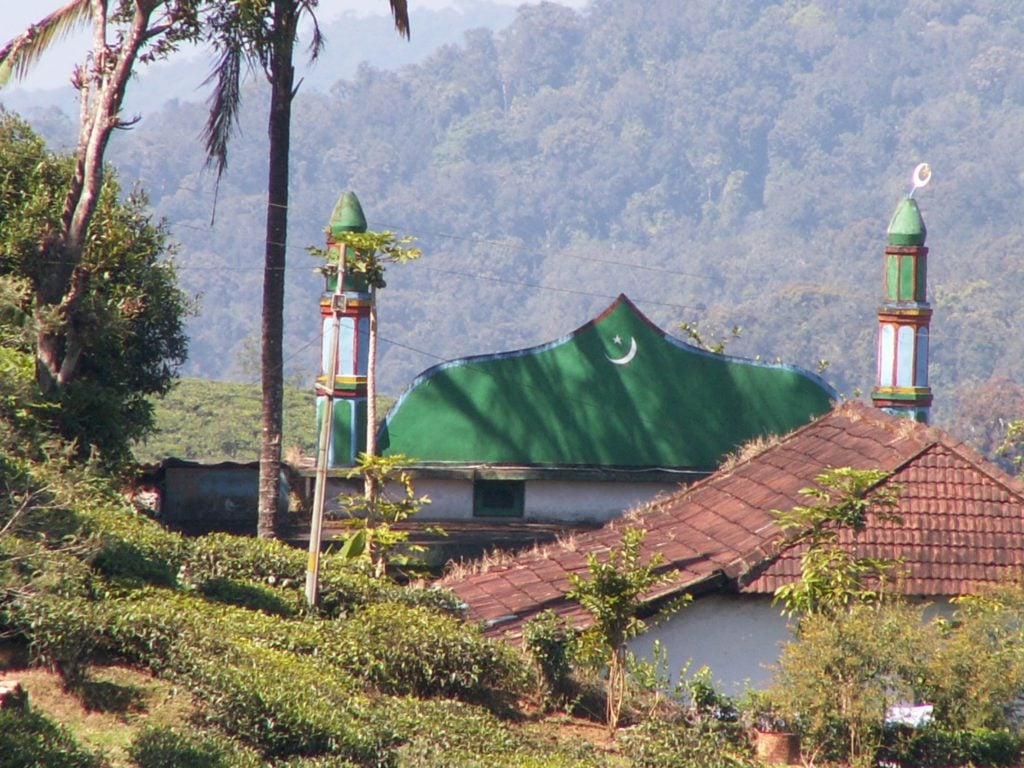
We started early in the morning after a large mug of highly sweetened Malabari tea. We set up a human chain from the mixer to the top; I was on the top with three other men. The men started a chant in Malayalam as they passed up the concrete containers and we started pouring the concrete. This is a job that needs to be done without stopping, so as the day advanced and we became tired, the work became progressively more difficult. But the spirit of the work, the fact that we were building a masjid, and the promise of the Malabari Biryani kept us going. By late afternoon, the final load was cast, and we came down. Then after washing up, we sat down to a meal that was more delicious than I remembered eating ever before. Was it the food? Was it the hunger? Was it the fact that we were eating it after a day well spent? I do not know. All I know is that it was wonderful to eat.
This masjid story has a small anecdote at its beginning. As I mentioned earlier, it was the custom in the plantations that estate managers presided at all religious functions irrespective of their own beliefs. So, when the Murugalli masjid construction was to be started, the workers organized a function to lay the foundation stone. The Murugalli Estate Manager was Mr. Krishna Uthayya. I was the Factory Assistant. That is when it occurred to the organizing committee that it would be a bit odd if the foundation stone for the masjid were to be laid by a Hindu. Islamically, there is no problem because laying foundation stones is itself not an Islamic custom and it makes no difference who does it, or even if it is done at all. But having announced a function, the committee had put itself into a bind where some people were objecting to the Hindu manager laying the foundation stone. Neither could they stop him from doing it as it was the usual age-old custom, nor could they cancel the function without causing offence. So, they came to me for advice.
I told them there had been a similar incident in the life of the Prophet Muhammad (peace be upon him), where the Makkan tribes were in a heated dispute about who should have the honor of placing the Hajar-al-Aswad in the wall of the Ka’aba. With his typical wisdom, he solved the dispute by placing the stone in a large cloth, which he asked all the tribal chiefs to hold. Then he picked up the stone himself and laid it in the place where it was supposed to be placed. Using this incident as a precedent, I suggested to them that I would stand down in the foundation trench. Their leaders could then hand the foundation stone to the manager who would hand it to me, and I would be the one to lay the foundation stone for the masjid. Everyone liked this proposal and that is what we did the following morning.
There is a sad ending to this part of my story. Dakshinamurty suddenly died in a very bizarre accident. He was at home one weekend and was having his head oiled. The barber who did the oil massage for him twisted his head to crack his spine. This is a common practice in India and is done all the time without any adverse result. However, in Dakshinamurty’s case the man accidentally snapped his spinal cord. He was instantly paralyzed from the neck down and two days later he died. Sadly, he could not see the completion of Mayura Factory, the project that he had started. Mr. D.R.S. Chary stayed with me till the project was completed and then returned to Chennai where he lived. A couple of years later, I heard that he also died. As I write this story, Mr. Krishna Uthayya, who apart from being my manager was also a good friend, also passed away some months ago. I mourn the passing of these good people with whom I shared these wonderful times.
